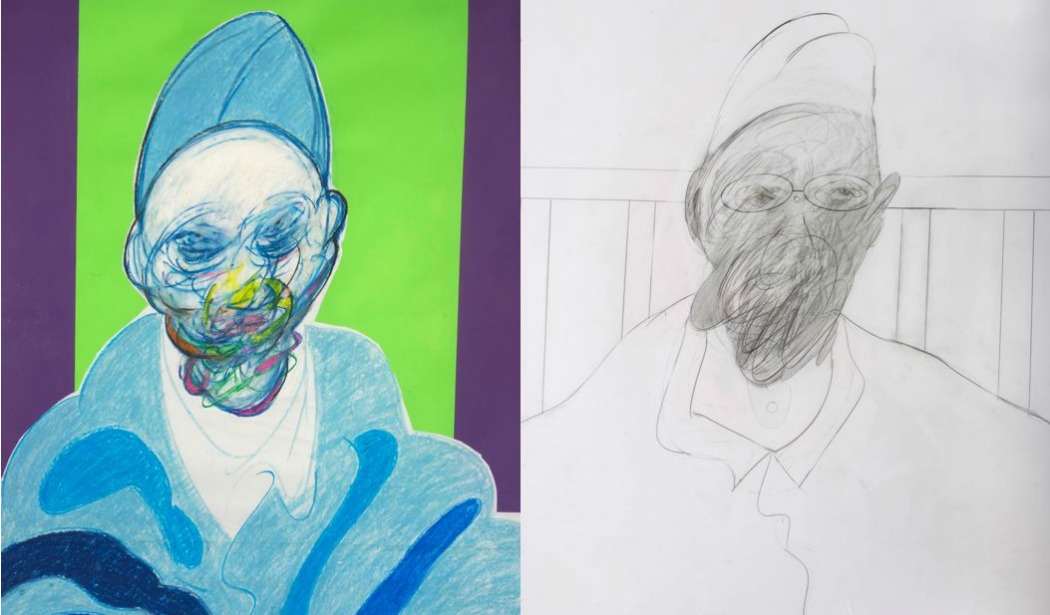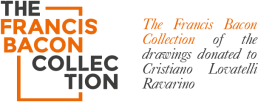April 13, 2016 – BLOUINARTINFO International

Herrick Gallery in London is presenting a fascinating exhibition that juxtaposes a group of highly contentious works on paper by the late Francis Bacon with a series of new paintings by British painter Darren Coffield.
Although born 60 years apart, the two artists crossed paths when they met in the infamous Colony Room Club in London’s Soho, a private drinking club famous for being the favoured meeting place for artists such as Bacon, Damien Hirst, and Tracey Emin
Bacon and Coffield are both known for their unique interpretations of figuration, with Coffield drawing on his interest in the field of human cognition and the way we perceive and process the world around us to create works that “subvert the viewer’s instinctive faculties for reading the apparently familiar.”
Coffield’s new series of paintings are the result of a process whereby the finished works are broken up and dispersed into one another, creating a new form that contains all the information but not necessarily displayed in the expected cognitive order.
Alongside Coffield’s new works, Herrick Gallery is showing eight pencil and graphite drawings and two pastel collages that were made by Francis Bacon between 1977 and 1992 and donated to his good friend in Italy, Cristiano Lovatelli Ravarino.
The controversy surrounding the Bacon works stems largely from comments made by the late artist himself, who often claimed that he didn’t make drawings. But according to the Gallery, there is extensive evidence that he did, but mischievously didn’t like the world to know.
It is easy to see why the works are attributable to Bacon, with evidence of his signature distraught faces and distorted bodies in the imagery, and with subject matter often relating to his most iconic themes such as his crucifixions and interpretations of Velazquez’s “Portrait of Pope Innocent X.”
The drawings donated to Cristiano Lovatelli Ravarino have been the subject of much debate, not to mention a criminal trial and extensive scrutiny by experts and scholars from around the world, as revealed on Ravarino’s website (http://www.francisbaconitaliandrawings.com/).
Commenting on the controversy surrounding the works, Ravarino states on his website that: “in one of his last interviews to the Irish Times for instance the artist admitted that he did in fact draw, although not emphasizing the importance of that activity.”
Richard Morphet, Keeper Emeritus of the Tate’s Modern Collection, supports the theory that Bacon did produce drawings in a note relating to the Tate’s 1996 purchase of two groups of Bacon drawings, gouaches, and oil-sketches totaling 42 sheets.
In the note, Morphet said: “Though few post-war works on paper by [Bacon] are known, it has become clear that this is not because he did not make any, but rather because he did not wish their existence to be known beyond his main circle.”
Ending the exhibition are five black and white photographs of Bacon taken in the 1980s by award winning photographer Neil Libbert, who has worked for The Guardian, The Sunday Times, and The New York Time, and in 2012 had an exhibition at the National Portrait Gallery.
NICHOLAS FORREST / BLOUINARTINFO International
